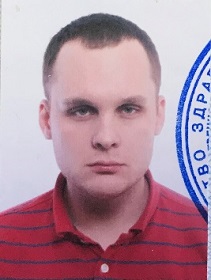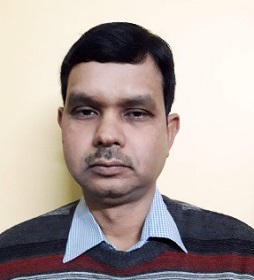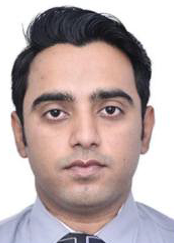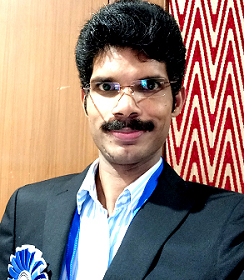Speakers
Henryk Kalisz
Enzymes4Biotech, UKTitle: Accelerated molecular dynamics simulation, functional sequence space clustering and experimentally guided machine learning as an integrated tool for the customization of enzyme performance for defined industrial applications
Abstract:
Enzymes play an important role in a wide range of industries, such as food and feed, agriculture, personal care, textiles, laundry detergents, fine chemicals, and pharmaceuticals. Some examples where enzymes are crucial include cheese manufacture, beer and winemaking, baking bread, fruit juice extraction and clarification, leather tanning and more recently in the production of biofuels and biopolymers1,2. Further, due to their high enantio- and regio-selectivity, leading to higher yields of the required enantiomer, enzymes are increasingly used in fine chemical synthesis and in the production of chiral pharmaceutical intermediates and APIs.
The enzymes used for various industrial applications can be harvested from microbial sources or they can be customized for a defined industrial application and overexpressed in heterologous hosts such as bacteria, yeasts and filamentous fungi. This type of enzyme engineering is a powerful way to obtain large amounts of a customized enzyme to replace traditional chemical processes.
Biography:
Henryk Kalisz obtained his Ph.D. in Biochemistry at Manchester University, has published over 60 papers in reputed scientific journals. He has over 30 years of experience in industrial enzymology and biotechnology. After his Ph.D., he worked as a postdoctorate at the University of Freiburg, Freiburg, Germany, before taking up a senior scientist role at the National Research Institute (Gesellschaft für Biotechnologische Forschung) in Braunschweig, Germany. He subsequently worked as Head of Biochemistry at Pharmacia, Nerviano, Italy, and as Chief Scientific Officer at Eucodis Bioscience in Vienna, Austria. Since October 2011 he has been applying his expertise in industrial enzymology as a consultant and independent representative to provide scientific and technological advice and assistance to various Biotechnology and Pharmaceuticals organizations.
Pashkov Evgeniy Alekseevitch
Sechenov University, RussiaTitle: Suppression of the reproduction of the influenza virus
Abstract:
According to the WHO, influenza is one of the most pressing problems in world health. Every year, about 500 thousand people die due not only to the infection itself, but also from the complications it causes. Because of their high variability, influenza viruses rapidly develop resistance to many traditional anti-influenza therapies. The development of drugs based on the mechanism of gene silencing using siRNA is a promising direction. Objective: To assess the decrease in viral reproduction in cells with reduced expression of the genes of the nuclear-pore complex Nup98 and Nup205. Materials and methods. Viruses. We used the influenza A / WSN / 1933 virus strain (St. Jude's Children's Research Hospital, USA). Cell lines. A549 cell culture - human lung adenocarcinoma (ATCC CCL-185, USA), MDCK cell culture – dogs ren (Institut Pasteur, France). siRNA.
Biography:
Evgeny Pashkov is a researcher at the Laboratory of Molecular Immunology of the I. I. Mechnikov Research Institute of the Russian Academy of Sciences and an assistant at the Department of Microbiology, Virology and Immunology of the I. M. Sechenov First Moscow State University (Sechenov University). Currently, he is studying at the Department of Microbiology, Virology and Immunology of Sechenov University. Evgeny has 1.5 years of state practice as a researcher and teacher and 3 years as an assistant surgeon at the N. V. Sklifosovsky Research Institute. Evgeny is passionate about fighting viral infections on an international scale.
Shyamapada Mandal
University of Gour Banga, IndiaTitle: Perspectives to the COVID-19 immunopathology and vaccine status
Abstract:
The ongoing coronavirus disease 2019 (COVID-19) pandemic, since its first emergence in China in December 2019 from SARS-CoV-2 (severe acute respiratory syndrome coronavirus 2) infection, caused more than 100 million people sick with 21.66 lakhs deaths globally, as of January 28, 2021. The highly infectious Betacoronavirus, SARS-CoV-2, replicates in the upper respiratory system at the disease initial stage (causing mild or asymptomatic COVID-19 in most cases), followed by immunopathological stage of inflammatory response to SARS-CoV-2 infection causing severe/critical COVID-19 with cytokine storm (a stage with substantial elevation of serum pro-inflammatory cytokines levels) and ARDS (acute respiratory distress syndrome) and multiple organ failure (majorly lungs, as well as heart, liver and kidney). However, no specific drug or vaccine is available to effectively combat the COVID-19 pandemic that devastated the most vulnerable (people of old age, or with medical conditions). Vaccine is therefore urgently required to prevent SARS-CoV-2 transmission, and deaths due to COVID-19. This communication thus stands for analysis (based on the available published information) with an update of the vaccines (including the S glycoprotein targeted vaccines) that are in the pipeline of rapid pace of COVID-19 vaccine development.
Biography:
Shyamapada Mandal, Professor, Department of Zoology, University of Gour Banga, India, is interested on infectious diseases, probiotics, and genomics and bioinformatics research. He did pre-PhD, PhD, and post-PhD research under the guidance of Professor Nishith Kumar Pal at Calcutta School of Tropical Medicine, India. He has published 115 articles with 8 book chapters. He is life member of IAMM and IASR, India, and fellow member of SASS, India. Eight national academic and research awards have been conferred to him. He has guided 52 post graduate students; supervised three MPhil and three PhD students, and supervising 6 PhD students. Professor Mandal is among the world’s top 2% scientists as per the survey of the Stanford University, published in PLOS (Public Library of Science) Biology (October, 2020).
Umar Khalid
Jawaharlal Nehru University, PakistanTitle: Metagenomics and molecular typing of mosquito borne flavivirus
Abstract:
Mosquitoes are one of the deadliest animals capable of transmitting the various pathogenic diseases to humans as well as animals. The present study was designed to identify the major species of mosquitoes, prevalent in three districts of Punjab representing the three agro-geo climatic zones viz; Multan, Chakwal and Jhang. Mosquitoes were stereoscopically identified followed by RNA extraction and multiplex RT-PCR. After RNA quantification, molecular characterization of the prevalent mosquito-borne viruses was performed through cDNA synthesis, multiplex RT-PCR followed by agarose gel electrophoresis of the PCR products. It was identified that 4334 (40.6%), 2242 (30%), 2040 (31.6%) were females out of total 10675, 7296 and 6450 mosquitoes collected from districts Chakwal, Jhang and Multan, respectively. It was concluded that, Culex species were present in abundance (73.2%) as compared to the Aedes species (26.7%) in the selected study districts. The multiplex PCR detected Dengue virus (DENV -1 and DENV-2), West Nile Virus (WNV), Japanese Encephalitis Virus (JEV) and Saint Louis Encephalitis Virus (SLEV) in the mosquitoes of all the three selected districts; however, the prevalence of mosquito-borne viruses insignificantly varied (P>0.05) among the three districts. In District Chakwal, SLE was found to be most abundant (13.7%, p=0.12) followed in order by WNV (13%, p=0.17), DENV (8.4%, p=0.91) and JEV (7.8%, p=Ref value), respectively. Similarly, in district Jhang, SLE was found to most prevalent (18.9%, p=0.015), followed by WNV (17.5%, p=0.013), JEV (8.1%, p=0.118) and DENV (4%, p= Ref value). However, in district Multan. WNV was found to be in abundance (27.5%, p=0.005) followed in order by SLE (11.5%, p=0.303), DENV (13%, p=0.199) and JEV (5.7%, p= Ref value). This study has provided a better understanding of the prevailing mosquito and mosquito-borne viruses in the study districts which can help to formulate appropriate control measures.
Biography:
Umar Khalid is currently a Ph.D. scholar with Seven years of experience at hand. Excellent clinical and quality control laboratory skills, with commended performance in conducting laboratory assays and resolving complex clinical and instrumental problems. Accurate, reliable, diligent and focused on the timely, quality completion of all lab procedures. Work well under pressure and time constraints within high-volume environments. Always seeking challenging opportunities to demonstrate my skills and abilities and attain experience and more and more knowledge.
Sinosh Skariyachan
St. Pius X College Rajapuram, IndiaTitle: Natural molecules are plausible therapeutic leads to the major protein targets
Abstract:
While significant efforts are in progress for developing drugs and vaccines against COVID-19, limited therapeutic agents are available to curtail this ever-witnessed pandemic. Thus, it is essential to screen novel therapeutic interventions in which structure-based drug discovery and high throughput screening of potential lead molecules paves significant insights. This study focused to predict the binding potential and interaction mechanisms of some natural molecules to the selected putative molecular targets of SARS-CoV-2 by molecular modeling, molecular docking and dynamic simulation studies. One the basis of database search and functional role in COVID-19, fourteen prospective targets were screened and the native structures of three targets that lack experimentally solved structures were computationally modeled and validated. The drug-likeliness, adsorption, distribution, metabolism and excretion (ADME) and toxicity features of selected natural compounds were computationally assessed.
Biography:
Sinosh Skariyachan, is working as Assistant Professor in the Department of Microbiology, St. Pius X College Rajapuram, Kasaragod, Kerala, India. He has pursued his post graduations in Microbiology (M. Sc) and Bioinformatics (M. Sc) and obtained his Ph. D in Biotechnology. He has sixteen years of experience in teaching and research. His key research domains are Computational Biology & Bioinformatics, Molecular Modeling and Computational Drug Designing, Chemoinformatics, Genomics and Proteomics and Medical Microbiology and infectious diseases. He is the member of 17 National and International scientific and professional societies. He has authored 56 International papers, 76 conferences proceedings, one text book and 8 invited book chapters. He has received several awards and travel grants for his research. He is the associate editor of Computers in Biology and Medicine (Elsevier) and serves as editorial board member for six international journals and reviewer for more than hundred plus international journals published by reputed publishers. He has received grants from various funding agencies and honored as plenary speaker in various National and International conferences and symposiums.






